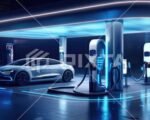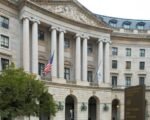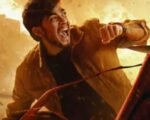A new wave of AI-generated images styled after Studio Ghibli films is sweeping across social media, fueled by OpenAI’s latest image-generation capabilities in GPT-4o. The trend has sparked both admiration and controversy, with some users delighting in the nostalgic recreations while others decry the AI’s impact on artistic integrity.
AI-Powered Ghibli Creations Go Viral
Within hours of OpenAI introducing its upgraded image-generation tool, social media users began flooding their feeds with illustrations mimicking the iconic style of Hayao Miyazaki’s beloved animation studio. Some transformed famous memes, like the Distracted Boyfriend and fitness influencer Ashton Hall’s morning routine, into whimsical Ghibli-esque scenes. Others took a more ambitious route, reimagining historic moments such as John F. Kennedy’s assassination and Donald Trump’s meeting with Volodymyr Zelenskyy in the delicate, painterly style of films like My Neighbor Totoro and Spirited Away.
One particularly notable participant in the trend was OpenAI CEO Sam Altman, who changed his profile picture on X (formerly Twitter) to a Ghibli-style portrait of himself. His participation only added fuel to the viral phenomenon, with more users experimenting with the tool to turn family photos and pet portraits into soft, dreamlike renderings.

The Shadow of Copyright Concerns
While many are enjoying the AI-assisted artistic transformation, the conversation has also reignited concerns about the use of AI in art. OpenAI has been at the center of copyright disputes, with lawsuits from news organizations, authors, and visual artists accusing the company of using their work without permission to train AI models.
- OpenAI, like its competitors, has not disclosed exactly what data was used to train its latest models.
- The striking accuracy of the Studio Ghibli replications has led some to question whether the studio’s works were scraped without authorization.
- A spokesperson for OpenAI stated that while they prohibit AI from generating images in the styles of living artists, broader studio aesthetics remain fair game.
“We continue to prevent generations in the style of individual living artists, but we do permit broader studio styles—which people have used to generate and share some truly delightful and inspired original fan creations,” OpenAI said in a statement.
Artists and Fans Push Back
Not everyone is enamored with the flood of AI-generated Ghibli-inspired images. Some artists and fans have labeled the trend as “AI slop”—a term used to describe mass-produced, AI-generated content that many feel lacks human touch and originality.
“Knock-off Ghibli abundance flooding our feeds. Art reduced to ‘content’. Unique design becomes memetic generation. Zero creativity,” one user on X lamented.
Studio Ghibli co-founder Hayao Miyazaki has long been vocal in his disdain for AI-generated art. A resurfaced 2016 video clip of him reacting to an AI demo has made the rounds again, where he called it “an insult to life itself.”
“Whoever made it gives no thought to pain. It’s very unpleasant,” Miyazaki said at the time. “You can make horrible things if you want, but I want nothing to do with it.”
A New Era of AI Creativity or a Warning Sign?
This is not the first time AI-generated art has stirred controversy. Just last year, thousands of artists signed an open letter condemning AI models trained on human-created work without consent. More recently, thousands of creatives pushed back against an AI art auction hosted by Christie’s, arguing that it legitimized theft of artistic labor.
Despite the backlash, OpenAI remains committed to integrating AI into creative processes, arguing that its latest tool is about giving users “as much creative freedom as possible.” The company insists that the new capabilities allow for a more refined user experience, claiming that GPT-4o excels at understanding complex prompts and rendering detailed images with remarkable precision.
Still, as AI art generation becomes more sophisticated, questions about its ethical implications continue to mount. With technology evolving rapidly, the balance between innovation and artistic integrity remains a battleground that’s far from settled.








